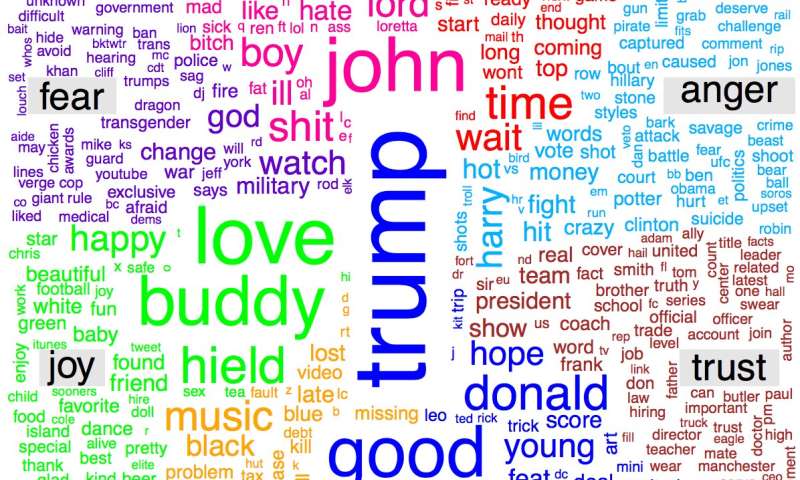AI system predicts election results via analysis of Twitter posts
Source: University of Granada
 Scientists from the University of Granada have applied artificial intelligence techniques to the analysis of huge volumes of data from Twitter, during the previous U.S. election campaign to create a political forecasting system
Scientists from the University of Granada have applied artificial intelligence techniques to the analysis of huge volumes of data from Twitter, during the previous U.S. election campaign to create a political forecasting system
Researchers from the Department of Computer Science and artificial intelligence at the University of Granada (UGR) have modeled a system based on artificial intelligence techniques that enable election results to be forecast by analyzing opinions on Twitter.
In a study published in the international journal IEEE Access, the UGR scientists explain their descriptive big data system capable of handling huge volumes of unstructured information (in the form of a data lake) derived from Twitter. Using this approach, they were able to create a political forecasting system and validate it with the real-life 2016 US elections, in which Donald Trump won against Hillary Clinton.
Political talk is perhaps more prevalent than ever before—one need only look to social networks for evidence of this, and the sheer amount of posts and threads devoted to political topics each day. One of the most widely used social networks for these purposes is Twitter, where the opinions of parties, leaders, and activists combine with those of people simply interested in politics. The ability to effectively process this data and convert it into knowledge is a laborious task that delivers benefits for innumerable fields, from academia to business or journalism.
The UGR study is the result of an endeavor to summarize a large volume of data and reduce it to clear, concise information that can contribute value to a research query. The system in question was developed by José Ángel Díaz García, María Dolores Ruiz and María José Martín-Bautista from the UGR's Department of Computer Science and artificial intelligence. It was tested on a real-life comparative problem concerned with two politicians and their respective policies: that of Donald Trump and Hillary Clinton, in their head-to-head clash in the November 2016 US general elections.
Analysis of sentiments and emotions
The system devised by the UGR scientists provides a series of associations between concepts and discussions on Twitter about the two politicians—in a format that is easy to interpret and explain—together with the sentiments and emotions generated by these debates.
"At the heart of our system are what we call unsupervised artificial intelligence techniques—that is, techniques that do not rely on databases having been pre-labeled in order to be trained and used," the authors explain.
Among these techniques, of particular importance are association rules, as these enable sentiment analysis to be conducted by means of sentiment lexicons and dictionaries. "Today, these techniques are of enormous value because they provide readily interpretable and easily understandable solutions. They enable straightforward data traceability and provide easily-explained results that may be used by people with no technical knowledge, thus democratizing access to artificial intelligence," the authors continue.
This new descriptive approach differs from the traditional machine learning models geared to predictive sentiment analysis. Those require large pre-labeled databases (very hard to achieve in relation to social networks, due to the volatility of the topics concerned), and typically offer solutions that are extremely difficult to interpret due to the highly complex mathematical adaptations.
Analysis of the results achieved by the new system endorses its capacity to obtain association rules and sentiment patterns with significant descriptive value in the case of its application to the US elections. Thus, parallels between these patterns and real-life events can be drawn.
Some of the parallels discovered by the system may be those, for instance, that establish a very strong link between the words prohibition/service/transgender and Donald Trump. This shows that the current U.S. president was linked to transgender people being banned from military service—a move that was already being considered in 2016 and was confirmed in 2017.
Regarding sentiments, the system reveals that there was a higher level of anger in U.S. society directed toward Hillary Clinton than toward Trump. The latter, by contrast, stood out for his association with the emotion of "trust"—in other words, the tweets posted about Trump were from people with a high degree of confidence in him as President.
If we take into account that the data were processed during the electoral campaign, a parallel could therefore even be drawn in the subsequent results that led Donald Trump to victory.
| }
|